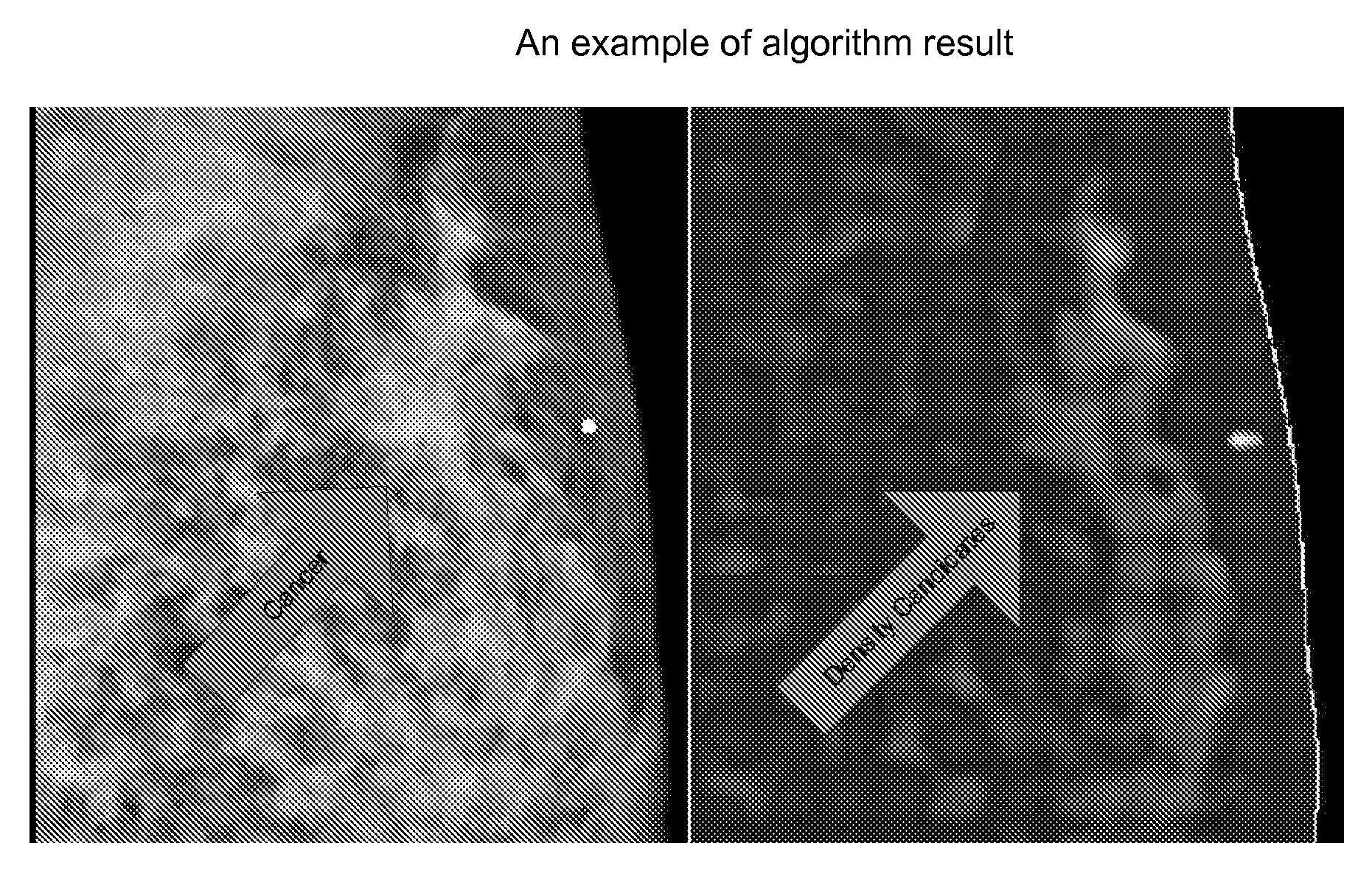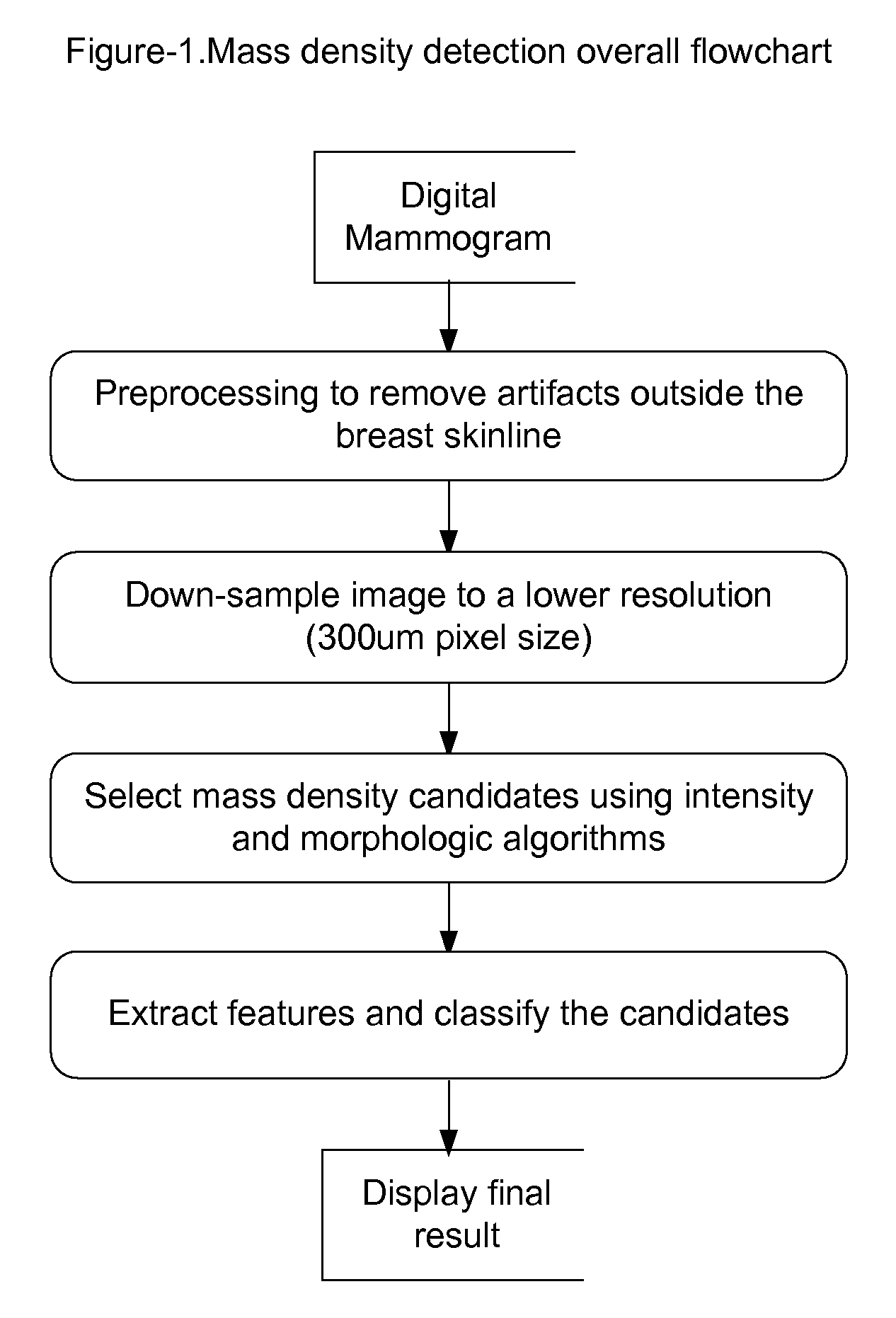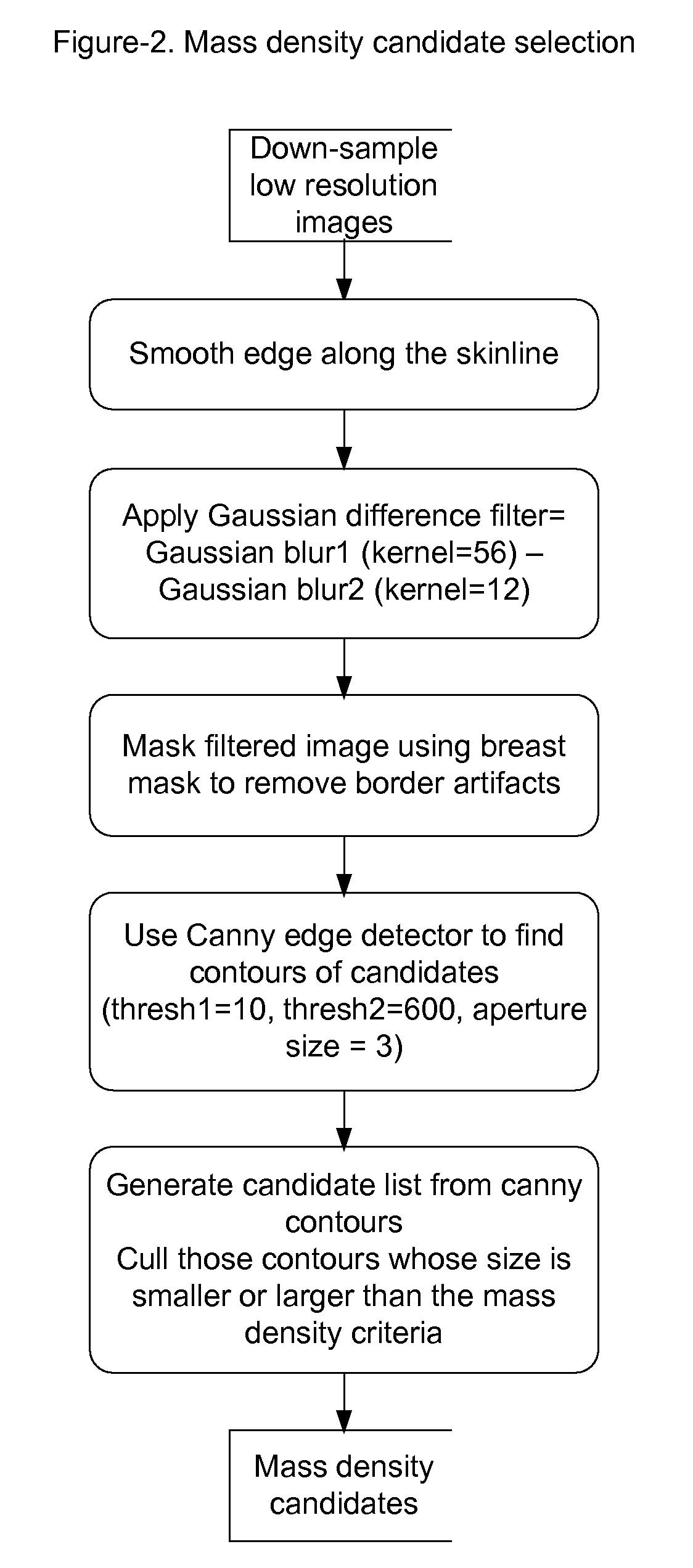Algorithms for selecting mass density candidates from digital mammograms
a technology of mass density and algorithm, applied in the field of medical imaging analysis, can solve the problem of fast processing time and achieve the effect of fast processing time and better selection sensitivity
- Summary
- Abstract
- Description
- Claims
- Application Information
AI Technical Summary
Benefits of technology
Problems solved by technology
Method used
Image
Examples
Embodiment Construction
[0014]As shown in FIG. 1, the input to the mass candidate selection algorithm is a digital mammogram image, or a breast image from other modality. The image is preprocessed to remove artifacts outside the breast tissue. The image resolution of a digital mammogram is usually between 50 um to 100 um. The image therefore can be down-sampled to a lower resolution, i.e., 300 um, in order to improve processing speed without compromising processing quality. The algorithm to select mass density candidate uses this down-sampled image.
[0015]As shown in FIG. 2, the down-sampled image is smoothed along the edge of the skinline. A Gaussian difference filter is applied to the smoothed image (see FIG. 3 the original image and the Gaussian difference filtered image). The first Gaussian filter kernel size is selected as 56; and the second Gaussian filter kernel size is selected as 12. The filtered image is masked by breast mask to remove border artifacts. Next step is to use Canny edge detector to f...
PUM
 Login to View More
Login to View More Abstract
Description
Claims
Application Information
 Login to View More
Login to View More - R&D
- Intellectual Property
- Life Sciences
- Materials
- Tech Scout
- Unparalleled Data Quality
- Higher Quality Content
- 60% Fewer Hallucinations
Browse by: Latest US Patents, China's latest patents, Technical Efficacy Thesaurus, Application Domain, Technology Topic, Popular Technical Reports.
© 2025 PatSnap. All rights reserved.Legal|Privacy policy|Modern Slavery Act Transparency Statement|Sitemap|About US| Contact US: help@patsnap.com



